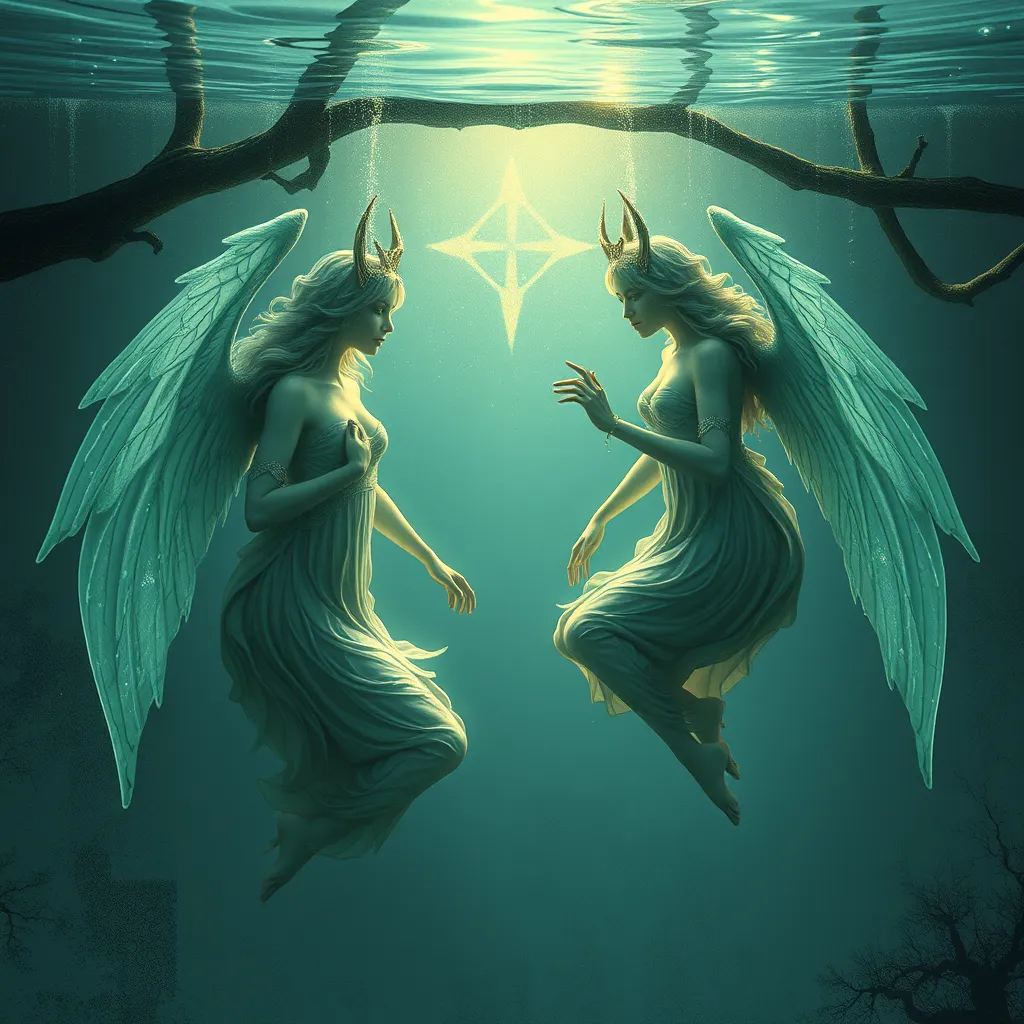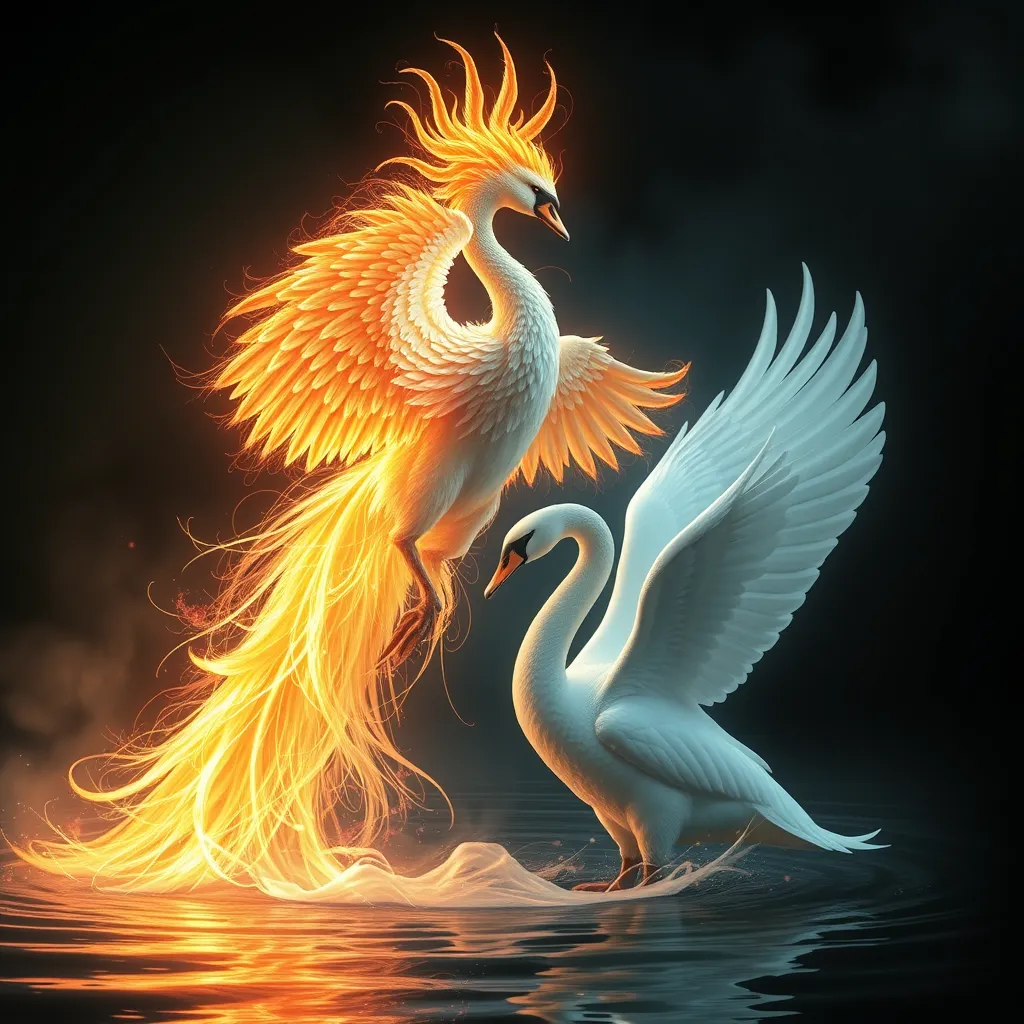Echoes of the Nymphs: Exploring the Myths and Legends of Water Spirits
I. Introduction
Nymphs and water spirits have long captivated human imagination, embodying the mysterious and often unpredictable nature of water itself. In various mythologies across the globe, these ethereal beings are depicted as guardians of rivers, lakes, and oceans, reflecting the significance of water in sustaining life.
Water, revered in many cultures, is not only essential for survival but also symbolizes purity, fertility, and transformation. This article aims to explore the historical context, cultural significance, and contemporary relevance of water spirits, particularly nymphs, in mythology.
We will delve into the rich tapestry of stories surrounding these entities, examine their roles across different cultures, and reflect on their continued influence in literature, art, and modern spirituality.
II. Historical Context of Water Spirits
A. Ancient civilizations and their water deities
Water spirits have been revered since ancient times, with significant representations in various civilizations:
- Greek nymphs and naiads: In ancient Greece, naiads were the nymphs of freshwater bodies, often depicted as beautiful maidens who would bestow blessings on those who honored them.
- Roman water spirits: The Romans adopted many Greek beliefs, venerating water deities such as Nereus and the water nymphs known as Nymphae.
B. Influence of geography on water spirit myths
The geographical features of a region heavily influenced the myths surrounding water spirits. For example, cultures near rivers often held water spirits in high regard, believing they controlled the flow and purity of water essential for agriculture and daily life.
C. Evolution of these legends through time
As societies evolved, so too did their legends. The narratives around nymphs and water spirits adapted, reflecting changes in cultural values, environmental concerns, and spiritual beliefs.
III. The Role of Nymphs in Different Mythologies
A. Greek mythology: Naiads and Oceanids
In Greek mythology, naiads are associated with freshwater sources, while Oceanids are their oceanic counterparts. Both groups are portrayed as nurturing yet capricious, embodying the duality of water as both life-giving and potentially destructive.
B. Celtic myths: Selkies and other water spirits
Celtic folklore introduces us to selkies, shape-shifting beings that can transform from seals to humans. They embody themes of longing and loss, illustrating the deep connection between humans and the sea.
C. Indigenous water spirits from around the world
Across the globe, indigenous cultures have their own water spirits. For example:
- In Native American cultures, water spirits are often seen as guardians of lakes and rivers, with rituals designed to honor them.
- African mythology features water spirits like Mami Wata, who is revered for her beauty and ability to control water.
D. Comparison of roles and characteristics
Despite regional differences, many water spirits share common traits, including their connection to fertility, transformation, and the dual nature of water. The nurturing aspects highlight water’s life-giving properties, while the more violent tales often serve as warnings against disrespecting these powerful entities.
IV. Symbolism of Water Spirits
A. Water as a symbol of life and fertility
Water is universally recognized as a source of life. In many cultures, water spirits symbolize this fertility, often being associated with agricultural prosperity and the health of communities.
B. The duality of water spirits: nurturing vs. dangerous
The dual nature of water spirits reflects the unpredictable qualities of water. They can provide sustenance and support, but also unleash storms and floods when angered. This duality serves as a reminder of the balance required in nature.
C. The connection between water and emotions
Water is often linked with emotions, representing the subconscious and the fluidity of feelings. Water spirits are thus seen as entities that govern emotional tides, embodying both tranquility and turmoil.
V. Nymphs in Literature and Art
A. Depictions of water spirits in classical literature
From Homer’s “Odyssey” to Ovid’s “Metamorphoses,” water spirits have graced classical literature, often depicted as enchanting figures who influence the fate of mortals.
B. Influence on Renaissance and Romantic artists
During the Renaissance and Romantic periods, artists drew inspiration from water spirits, portraying them in paintings and sculptures that emphasized their beauty and mystery. Artists like J.M.W. Turner and John William Waterhouse captured the essence of nymphs in their works.
C. Modern interpretations in literature and popular culture
Today, water spirits continue to inspire modern literature and media. From fantasy novels to films, they are often reimagined, reflecting contemporary themes of environmentalism and spirituality.
VI. Contemporary Beliefs and Practices
A. Revival of interest in mythological water spirits
In recent years, there has been a resurgence of interest in mythological water spirits, often tied to a broader movement towards environmental awareness and respect for nature.
B. Water spirituality and environmentalism
Many modern spiritual practices incorporate the reverence for water spirits, promoting the idea that honoring these entities can lead to a deeper connection with the natural world and a commitment to environmental stewardship.
C. Rituals and practices honoring water spirits today
Rituals honoring water spirits can vary widely, but common practices include:
- Offering prayers or tributes at bodies of water.
- Participating in cleansing ceremonies to purify oneself and the environment.
VII. Regional Variations and Unique Water Spirits
A. Overview of lesser-known water spirits from various cultures
While many water spirits are well-known, countless lesser-known entities exist, each with unique attributes and stories. These spirits often reflect the local culture and geography.
B. Regional myths: Africa, Asia, the Americas
Water spirits vary greatly across regions:
- In Africa, water spirits like Mami Wata are celebrated for their beauty and power.
- Asian cultures have various water deities, such as the Japanese Kappa, known for their mischievousness.
- In the Americas, many Indigenous tribes honor water spirits as part of their cosmologies.
C. The significance of local geography in shaping these legends
Local geography significantly influences the characteristics of water spirits. Coastal communities may have sea deities, while those near lakes and rivers develop different myths, illustrating the intimate relationship between people and their environment.
VIII. Conclusion
The myths surrounding water spirits, particularly nymphs, illustrate humanity’s enduring fascination with water and its profound impact on life. These legends have not only shaped cultural identities but also serve as reminders of the need to respect and protect our natural resources.
In today’s world, the relevance of nymphs and water spirits persists, as they symbolize the interconnectedness of life and the environment. As we move forward, preserving these myths and their cultural significance becomes increasingly important, ensuring that the echoes of the nymphs continue to resonate through time.



